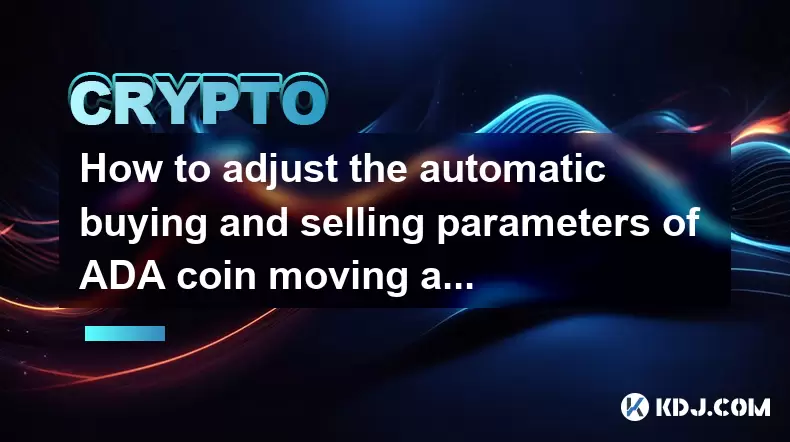-
 Bitcoin
Bitcoin $119600
0.45% -
 Ethereum
Ethereum $4671
8.16% -
 XRP
XRP $3.250
2.78% -
 Tether USDt
Tether USDt $0.9999
0.01% -
 BNB
BNB $838.0
3.17% -
 Solana
Solana $198.5
12.77% -
 USDC
USDC $0.9997
-0.01% -
 Dogecoin
Dogecoin $0.2396
6.18% -
 TRON
TRON $0.3547
2.21% -
 Cardano
Cardano $0.8583
9.20% -
 Chainlink
Chainlink $24.42
13.29% -
 Hyperliquid
Hyperliquid $44.08
1.42% -
 Stellar
Stellar $0.4492
2.37% -
 Sui
Sui $3.915
6.09% -
 Bitcoin Cash
Bitcoin Cash $612.9
3.02% -
 Hedera
Hedera $0.2627
5.34% -
 Ethena USDe
Ethena USDe $1.000
-0.03% -
 Avalanche
Avalanche $24.94
7.83% -
 Litecoin
Litecoin $132.6
10.48% -
 Toncoin
Toncoin $3.439
1.39% -
 UNUS SED LEO
UNUS SED LEO $9.212
2.34% -
 Shiba Inu
Shiba Inu $0.00001371
4.89% -
 Uniswap
Uniswap $11.54
1.13% -
 Polkadot
Polkadot $4.211
7.67% -
 Dai
Dai $0.9998
-0.03% -
 Cronos
Cronos $0.1649
-1.62% -
 Ethena
Ethena $0.7975
-1.46% -
 Pepe
Pepe $0.00001235
9.15% -
 Bitget Token
Bitget Token $4.445
0.46% -
 Aave
Aave $323.7
8.18%
How to adjust the automatic buying and selling parameters of ADA coin moving average crossover?
ADA traders use the Moving Average Crossover strategy, adjusting parameters like moving average lengths and entry/exit points to optimize trading based on market conditions.
May 19, 2025 at 02:42 pm

Introduction to ADA Coin and Moving Average Crossover
ADA, the native cryptocurrency of the Cardano blockchain, is a popular digital asset among traders and investors. One of the strategies used to trade ADA is the Moving Average Crossover. This strategy involves using two moving averages to identify potential buy and sell signals. By adjusting the parameters of this strategy, traders can fine-tune their trading approach to better align with market conditions and their risk tolerance. In this article, we will explore how to adjust the automatic buying and selling parameters of the ADA coin moving average crossover strategy.
Understanding Moving Average Crossover
Moving Average Crossover is a technical analysis strategy that uses two moving averages of different lengths to generate trading signals. The most common setup involves a short-term moving average (e.g., 50-day moving average) and a long-term moving average (e.g., 200-day moving average). A buy signal is generated when the short-term moving average crosses above the long-term moving average, indicating a potential uptrend. Conversely, a sell signal is generated when the short-term moving average crosses below the long-term moving average, suggesting a potential downtrend.
Setting Up the Initial Parameters
To start adjusting the automatic buying and selling parameters of the ADA coin moving average crossover, you first need to set up the initial parameters. Here's how to do it:
- Choose a trading platform: Select a platform that supports algorithmic trading and allows you to input custom parameters. Popular choices include TradingView, MetaTrader, or specialized crypto trading platforms like Binance or Coinbase Pro.
- Select the moving averages: Decide on the lengths of the short-term and long-term moving averages. A common starting point is the 50-day and 200-day moving averages.
- Set up the crossover strategy: On your chosen platform, configure the moving average crossover strategy using the selected moving averages. Ensure that the platform is set to generate buy signals when the short-term moving average crosses above the long-term moving average and sell signals when the short-term moving average crosses below the long-term moving average.
Adjusting the Moving Average Lengths
One way to adjust the parameters of the ADA coin moving average crossover strategy is to change the lengths of the moving averages. This can help you respond more quickly or slowly to market changes. Here's how to do it:
- Shortening the moving averages: If you want to be more responsive to short-term price movements, consider shortening the lengths of both moving averages. For example, you might switch from a 50-day/200-day setup to a 20-day/50-day setup. This can help you capture quicker price movements but may also increase the risk of false signals.
- Lengthening the moving averages: If you prefer a more conservative approach, you can lengthen the moving averages. For instance, you might switch to a 100-day/250-day setup. This can help filter out short-term noise and provide more reliable signals, but it may also result in fewer trading opportunities.
Fine-Tuning the Entry and Exit Points
In addition to adjusting the moving average lengths, you can fine-tune the entry and exit points to optimize your trading strategy. Here are some methods to consider:
- Adding a confirmation period: To reduce the risk of false signals, you can add a confirmation period after the crossover occurs. For example, you might wait for three consecutive days of the short-term moving average being above the long-term moving average before entering a buy position. Similarly, you can wait for three consecutive days of the short-term moving average being below the long-term moving average before exiting a position.
- Using additional indicators: Incorporating additional technical indicators can help confirm the validity of the moving average crossover signals. For instance, you might use the Relative Strength Index (RSI) or MACD (Moving Average Convergence Divergence) to confirm overbought or oversold conditions before entering or exiting a trade.
- Setting stop-loss and take-profit levels: To manage risk, consider setting stop-loss and take-profit levels based on the volatility of ADA. For example, you might set a stop-loss at 5% below your entry price and a take-profit at 10% above your entry price. These levels can be adjusted based on your risk tolerance and market conditions.
Implementing the Adjusted Parameters
Once you have decided on the adjustments to your moving average crossover strategy, you need to implement them on your trading platform. Here's how to do it:
- Update the moving average lengths: On your trading platform, change the lengths of the short-term and long-term moving averages to the new values you have chosen. Make sure to save these changes.
- Configure the confirmation period: If you are adding a confirmation period, set this up in your trading platform's settings. Ensure that the platform will only execute buy or sell orders after the specified confirmation period has passed.
- Add additional indicators: If you are using additional indicators like RSI or MACD, configure these on your platform to provide confirmation signals. Set the thresholds for overbought and oversold conditions according to your strategy.
- Set stop-loss and take-profit levels: Input the stop-loss and take-profit levels into your trading platform. Ensure that these levels are automatically triggered when the specified price thresholds are reached.
Monitoring and Backtesting the Strategy
After implementing the adjusted parameters, it's crucial to monitor and backtest the strategy to ensure it performs as expected. Here's how to do it:
- Monitor performance: Keep a close eye on the performance of your adjusted strategy. Track metrics such as the number of trades, win rate, average profit/loss per trade, and overall profitability. This will help you understand how well the adjusted parameters are working.
- Backtest the strategy: Use historical data to backtest your strategy. This involves running the strategy on past price data to see how it would have performed. Most trading platforms offer backtesting tools that allow you to input your parameters and analyze the results.
- Adjust further if necessary: Based on the results of your monitoring and backtesting, you may need to make further adjustments to your parameters. This could involve tweaking the moving average lengths, confirmation periods, or stop-loss and take-profit levels.
Frequently Asked Questions
Q: Can the moving average crossover strategy be used for other cryptocurrencies besides ADA?
A: Yes, the moving average crossover strategy can be applied to other cryptocurrencies. The key is to adjust the parameters based on the specific volatility and market conditions of each cryptocurrency.
Q: How often should I review and adjust my trading parameters?
A: It's a good practice to review your trading parameters at least monthly or whenever there are significant changes in market conditions. This helps ensure your strategy remains effective and aligned with current market dynamics.
Q: Are there any risks associated with using the moving average crossover strategy for ADA?
A: Yes, like any trading strategy, there are risks involved. The moving average crossover strategy can generate false signals, especially in volatile markets. It's important to use risk management techniques such as stop-loss orders to mitigate potential losses.
Q: Can I automate the moving average crossover strategy for ADA trading?
A: Yes, many trading platforms allow you to automate the moving average crossover strategy using algorithmic trading tools. This can help you execute trades more efficiently and consistently based on your set parameters.
Disclaimer:info@kdj.com
The information provided is not trading advice. kdj.com does not assume any responsibility for any investments made based on the information provided in this article. Cryptocurrencies are highly volatile and it is highly recommended that you invest with caution after thorough research!
If you believe that the content used on this website infringes your copyright, please contact us immediately (info@kdj.com) and we will delete it promptly.
- Meme Coins: Chasing the 2025 Surge – Which Will Moonshot?
- 2025-08-13 10:25:23
- Bitcoin's Wild Ride: Rally, Pullback, and What's Next
- 2025-08-13 10:25:23
- Bitcoin, Bitmax, and Institutional Demand: A New Era of Crypto Investment
- 2025-08-13 10:45:12
- Solana, ROAM, and Airdrops: What's the Buzz in 2025?
- 2025-08-13 11:35:13
- Riding the Crypto Wave: NFTs, DeFi, and the Market's $4.2T High
- 2025-08-13 11:35:13
- Cold Wallet: Cashback, Crypto, and Cutting Gas Fees Like a Boss
- 2025-08-13 11:45:17
Related knowledge

How to purchase Aragon (ANT)?
Aug 09,2025 at 11:56pm
Understanding Aragon (ANT) and Its PurposeAragon (ANT) is a decentralized governance token that powers the Aragon Network, a platform built on the Eth...

Where to trade Band Protocol (BAND)?
Aug 10,2025 at 11:36pm
Understanding the Role of Private Keys in Cryptocurrency WalletsIn the world of cryptocurrency, a private key is one of the most critical components o...

What is the most secure way to buy Ocean Protocol (OCEAN)?
Aug 10,2025 at 01:01pm
Understanding Ocean Protocol (OCEAN) and Its EcosystemOcean Protocol (OCEAN) is a decentralized data exchange platform built on blockchain technology,...

How to invest in Kyber Network Crystal v2 (KNC)?
Aug 12,2025 at 05:21pm
Understanding Kyber Network Crystal v2 (KNC)Kyber Network is a decentralized liquidity hub built on the Ethereum blockchain that enables instant token...

Where can I buy UMA (UMA)?
Aug 07,2025 at 06:42pm
Understanding UMA and Its Role in Decentralized FinanceUMA (Universal Market Access) is an Ethereum-based decentralized finance (DeFi) protocol design...

How to sell my Ren (REN) tokens?
Aug 13,2025 at 11:35am
Understanding REN Tokens and Their Role in Decentralized FinanceREN is an ERC-20 token that powers the Ren protocol, a decentralized interoperability ...

How to purchase Aragon (ANT)?
Aug 09,2025 at 11:56pm
Understanding Aragon (ANT) and Its PurposeAragon (ANT) is a decentralized governance token that powers the Aragon Network, a platform built on the Eth...

Where to trade Band Protocol (BAND)?
Aug 10,2025 at 11:36pm
Understanding the Role of Private Keys in Cryptocurrency WalletsIn the world of cryptocurrency, a private key is one of the most critical components o...

What is the most secure way to buy Ocean Protocol (OCEAN)?
Aug 10,2025 at 01:01pm
Understanding Ocean Protocol (OCEAN) and Its EcosystemOcean Protocol (OCEAN) is a decentralized data exchange platform built on blockchain technology,...

How to invest in Kyber Network Crystal v2 (KNC)?
Aug 12,2025 at 05:21pm
Understanding Kyber Network Crystal v2 (KNC)Kyber Network is a decentralized liquidity hub built on the Ethereum blockchain that enables instant token...

Where can I buy UMA (UMA)?
Aug 07,2025 at 06:42pm
Understanding UMA and Its Role in Decentralized FinanceUMA (Universal Market Access) is an Ethereum-based decentralized finance (DeFi) protocol design...

How to sell my Ren (REN) tokens?
Aug 13,2025 at 11:35am
Understanding REN Tokens and Their Role in Decentralized FinanceREN is an ERC-20 token that powers the Ren protocol, a decentralized interoperability ...
See all articles

























































































